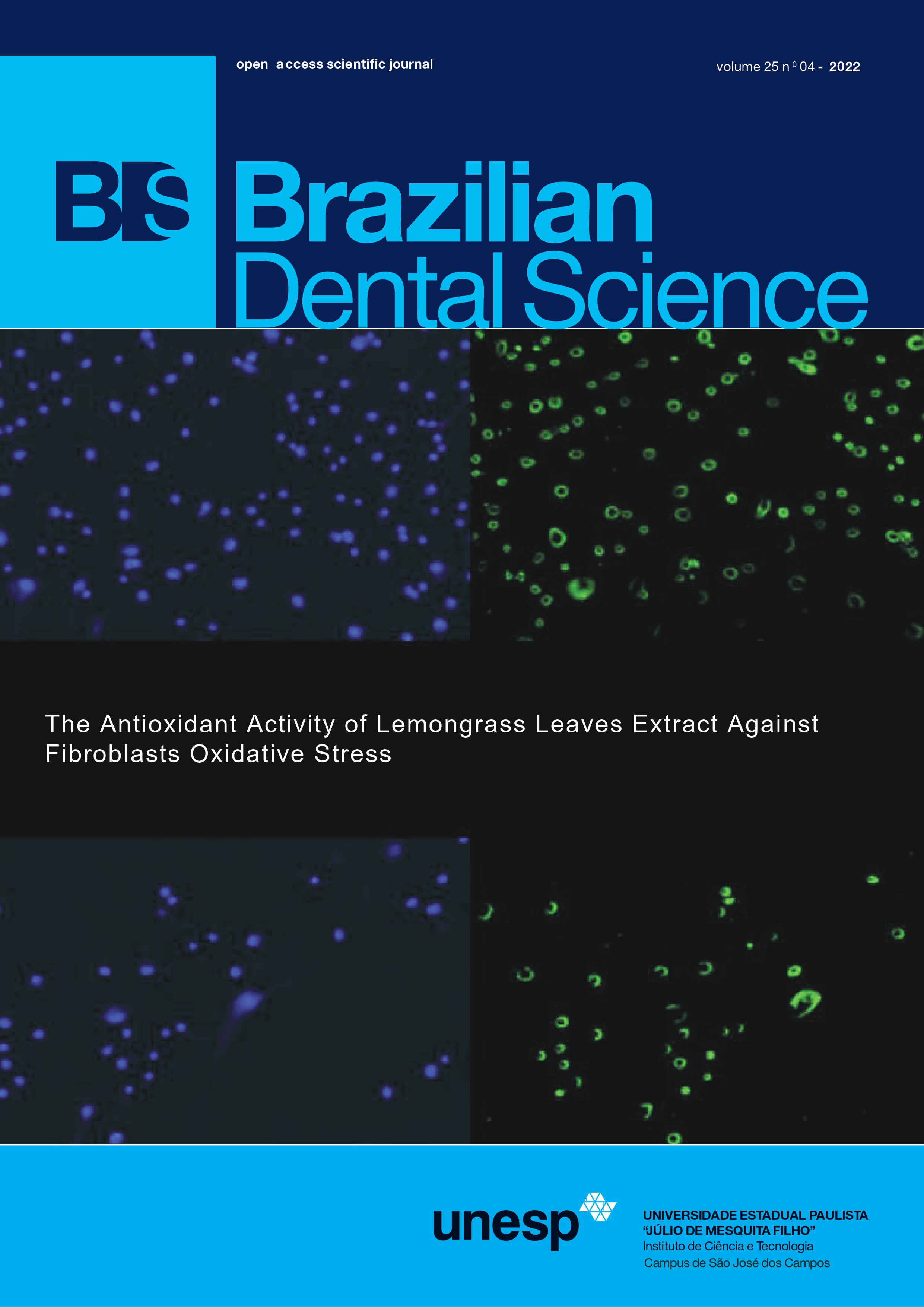Characterization of sound enamel and natural white spot lesions
DOI:
https://doi.org/10.4322/bds.2022.e3488Abstract
Objective: To compare optical, morphological, chemical, and physical aspects of the sound enamel and white
spot lesions (WSL) classified as ICDAS 2. Material and Methods: Seventeen human molars with one surface
presenting WSL and a sound surface (2 x 2 mm window) were characterized by Quantitative light-induced
fluorescence (QLF®), Optical coherence tomography (OCT), microhardness, and Raman spectroscopy. The ANOVA
and Tukey’s test were used at 5% significance level. Results: The QLF comparison between distinct substrates
yielded decreased Q (integrated fluorescence loss) of -15,37%mm2 and -11,68% F (fluorescence loss) for
WSL. The OCT detected mean lesion depth of 174,43 um. ANOVA could not detect differences in the optical
attenuation coefficient between the substrates (p>0.05). Lower microhardness measures were observed in WSL
than on sound enamel (p<0.05). The Raman spectra showed four vibrational phosphate bands (v1, v2, v3, v4),
where the highest peak was at 960.3 cm-1 (v1) for both substrates. However, a 40% decrease in phosphate (v1)
was detected in WSL. The peak at 1071 cm-1 was higher for sound enamel, indicating the presence of a phosphate
band instead of the B-type carbonate. The spectra showed higher intensity of the organic composition at 1295 cm-1
and 1450 cm-1 for WSL. Conclusion: Non-invasive QLF, OCT and Raman spectroscopy were able to distinguish
differences in fluorescence, optical properties, and organic/inorganic components, respectively, between sound
enamel and WSL, validated by the destructive microhardness analysis.
KEYWORDS
Dental caries; Dental enamel; White-spot lesions; Diagnosis; Raman Spectroscopy.
Downloads
Downloads
Published
How to Cite
Issue
Section
License
Brazilian Dental Science uses the Creative Commons (CC-BY 4.0) license, thus preserving the integrity of articles in an open access environment. The journal allows the author to retain publishing rights without restrictions.
=================




























